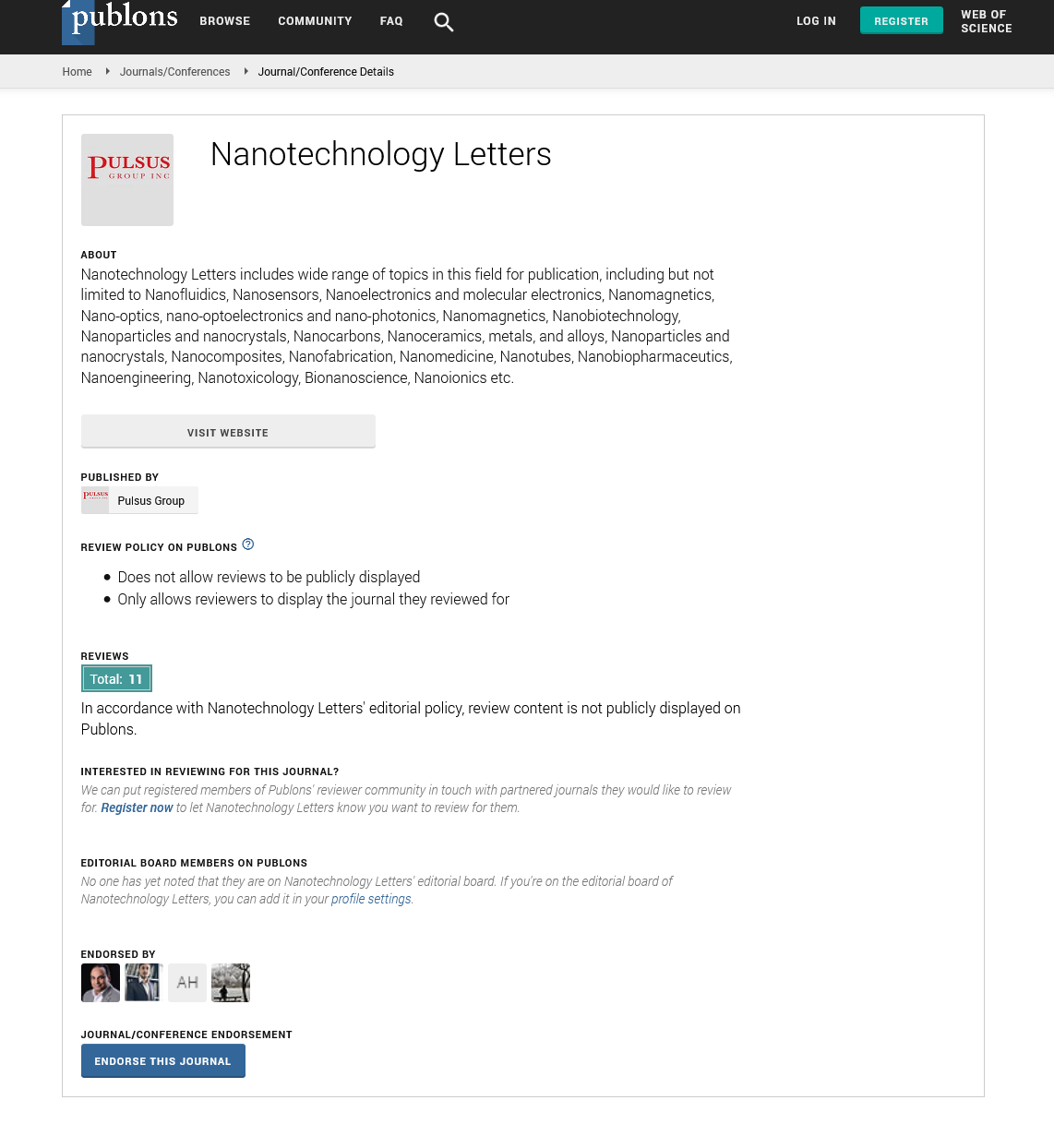Methods and the types of energy storage molecules
Received: 02-Nov-2021 Accepted Date: Nov 16, 2021; Published: 23-Nov-2021
Citation: Lewis T. Methods and the types of energy storage molecules. Nanotechnol Lett. 2021;6(2):5.
This open-access article is distributed under the terms of the Creative Commons Attribution Non-Commercial License (CC BY-NC) (http://creativecommons.org/licenses/by-nc/4.0/), which permits reuse, distribution and reproduction of the article, provided that the original work is properly cited and the reuse is restricted to noncommercial purposes. For commercial reuse, contact reprints@pulsus.com
Description
Energy storage is the storage of energy that is produced at one time for later use in order to reduce the imbalance between energy demand and energy production. Devices that store energy are commonly referred to as accumulators or batteries. Storage options include battery, heat, or mechanical system. All of these technologies can be combined with software that controls the charging and discharging of energy. There are three types of energy storage molecules: lipids, proteins, carbohydrates, and nucleic acids. Organisms use two main types of energy storage. Energy-rich molecules, such as glycogen and triglycerides, store energy in the form of co-chemical bonds. Cells synthesize such molecules and later store them for release of energy. The electricity currently produced is a raw material resource that is primarily interchangeable with electricity from other sources. Due to the limited options for large-scale energy storage, it is essentially just in time resources that are produced on demand to meet the needs of power-consuming customers. Climate change mitigation has increased the focus on the use of renewable energy.
Energy storage is considered an important technology that has the potential to reduce the intermittentness and variability of wind and solar resources, but energy storage resources have low emissions to ensure greenhouse gas reductions or gas that needs to be charged with zero emissions or renewable power. Energy storage is increasingly being considered for its potential to provide interstate power grids and, in some cases, regional distribution systems, and thus to provide significant benefits to individual power customers. The ability to store energy offers the potential for more flexibility in power generation and use, and provides an alternative way to handle the peak load of the system with renewable power stored when demand is low. In addition to supplying power on demand, energy storage technology may provide auxiliary services to the power grid to ensure the reliability and stability of the power system and better adapt power generation to power demand. Hydroelectric pump storage, compressed air energy storage, and cold energy storage are examples of potential energy storage technologies. These are examples of mostly large monolithic systems currently used for energy storage, offering the possibility to generate electricity using storage media such as water and air rather than storing electricity directly. According to the federal energy regulatory commission, there are currently about 24 hydro pumped storage power plants in operation with a total installed capacity of over 16.5 gigawatts. Hydropower accounts for about 94% of the existing US energy storage capacity. The grid-level storage of potential energy systems is well established, so this report focuses on the relatively new uses of modular batteries for grid-level storage. Modular battery technology typically stores electrical energy in a chemical medium that can be converted to electricity and consists of a standardized single cell with relatively small power and voltage capacity, typically to accommodate larger power loads. It is aggregated in. lead-acid batteries and lithium-ion batteries are the most commonly used modular battery technologies in the utility sector. Lithium-ion batteries are used in a variety of applications due to their high energy density and the ability to run a series of charge cycles at full power. However, battery technology can typically only power for a few hours, and the time it takes to charge the battery system varies. Procurement of cobalt for lithium-ion batteries has also been controversial in many small Congolese mines due to child labor and safety concerns. Lithium-ion battery systems are currently the most widely used form of modular storage and a major technology for electric vehicles, but there are several factors in system cost, materials used, and the safety of these systems. A wide array of storage technologies have been developed so that the grid can meet everyday energy needs. Since the discovery of electricity, we have sought effective methods to store that energy for use on demand. Over the last century, the energy storage industry has continued to evolve, adapt, and innovate in response to changing energy requirements and advances in technology. Energy storage systems provide a wide array of technological approaches to managing our power supply in order to create a more resilient energy infrastructure and bring cost savings to utilities and consumers. To help understand the diverse approaches currently being deployed around the world, we have divided them into five main categories batteries, thermal, mechanical storage, hydrogen, pumped hydropower.
Conclusion
Batteries are a range of electrochemical storage solutions, including advanced chemistry batteries, flow batteries, and capacitors. Thermal capturing heat and cold to create energy on demand or offset energy needs. Mechanical storage captures other innovative technologies to harness kinetic or gravitational energy to store electricity. Hydrogen excess electricity generation which can be converted into hydrogen via electrolysis and stored pumped hydropower creating large-scale reservoirs of energy with water.






